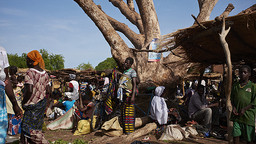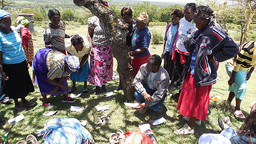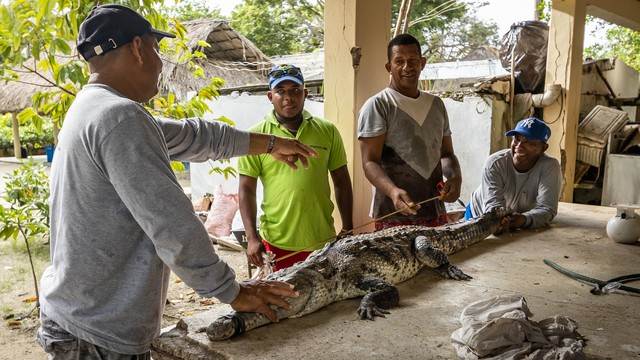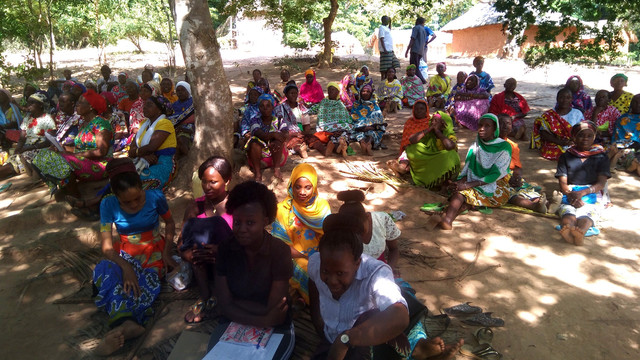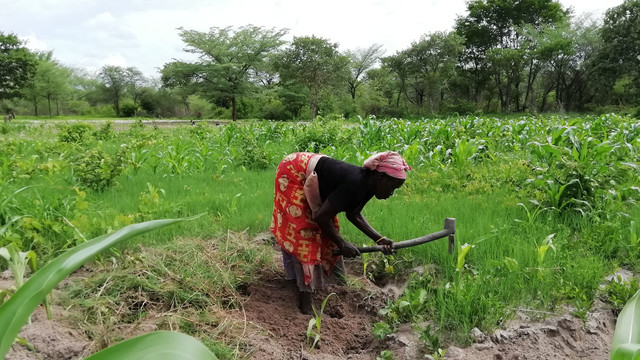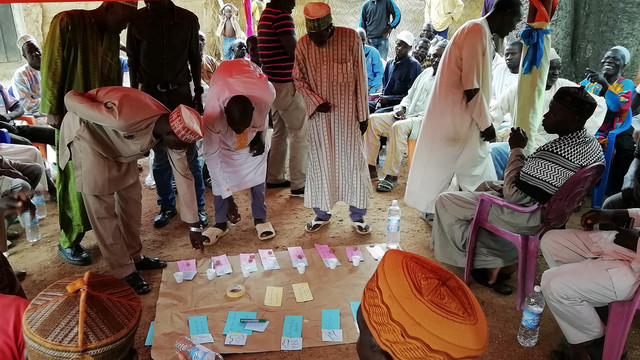Enhancing the equity and effectiveness of protected area conservation
IIED worked with partners to institutionalise social equity assessment and action planning at protected areas in Kenya and Uganda.

Community members at Mgahinga National Park, Uganda discuss the Social Assessment for Protected and Conserved Areas methodology (Photo: copyright Rob Small)
Global efforts to reduce biodiversity loss are heavily focused on expanding the network of protected areas (PAs). But the social impacts of PAs – particularly negative social impacts – are increasingly capturing national and international attention.
There are ethical concerns – for example, that conservation should not disproportionately, negatively impact on poorer or more vulnerable people. There are also instrumental concerns, such as increasing evidence to indicate that people’s resentment towards conservation is an important driver of poaching and illegal encroachment.
As a result, there is growing recognition that PAs must be equitably managed and equitably governed if they are to successfully support both biodiversity conservation and human wellbeing, and within the current Convention on Biological Diversity’s (CBD) strategic plan, Aichi Target 11 calls for “equitable management” of PAs by 2020.
But progress towards delivering more equitable management of PAs is limited, with few people understanding the meaning of equity in a conservation context, or having a suitable methodology to assess it.
What did IIED do?
With funding from the UK government’s Darwin Initiative, we collaborated with Fauna and Flora International (FFI), Kenya Wildlife Service (KWS) and Uganda Wildlife Authority (UWA) to enhance the equity and effectiveness of protected area conservation.
We used our Social Assessment for Protected and Conserved Areas (SAPA) methodology to institutionalise social equity assessment and action planning at protected areas and conserved areas in Kenya and Uganda. The project focused on three PAs in Kenya (Ruma, Kisite and Marsabit) and three PAs in Uganda (Mgahinga, Semliki and Murchison Falls).
The SAPA methodology is relatively low-cost and can be used at any type of PA, or conserved areas not officially designated as PAs. It is designed to help PA managers and other key stakeholder groups increase and more equitably share positive impacts, and reduce the negative impacts.
However, evidence indicates that people’s resentment towards protected area conservation relates not just to perceived inequity in the distribution of negative and positive social impacts of PAs, but also to the reluctance of some authorities to recognise concerns of local communities and strengthen PA governance procedures.
So SAPA also draws on our experience of developing its ‘sister’ governance assessment methodology (GAPA) to assess the ‘equity dimensions’ of recognition and procedure in management and governance, as well as distribution.
Our aims were to increase biodiversity conservation and human wellbeing around the project sites in Kenya and Uganda and, through monitoring and analysis of our results, develop evidence of both the instrumental and ethical case for more emphasis on equity in conservation.
Key positive impacts that we found across the six protected areas fall across five main categories: 1) ecosystem service benefits 2) PA-related employment 3) PA-supported development projects 4) reduced human-wildlife conflict, and 5) improved security.
Key negative impacts fall under four categories: 1) human-wildlife conflict 2) reduced access to resources 3) unfair law enforcement, and 4) unfair distribution of benefits.
To understand what difference SAPA made, we used an outcome harvesting approach. In all, 50 different outcomes were harvested. PA management was the largest category of outcomes influenced by the SAPAs (59% of outcomes). It included actions related to boundary demarcation, education, communication and law enforcement. Half of all the outcomes included aspects of governance, especially increasing 'respect for actors'.
The expectation that conservation can reduce poverty is rarely realistic. All too often the negative impacts of conservation have contributed to poor rural communities being left behind. But PA managers working with other key actors at site level can reduce and even eliminate negative impacts on these communities and enhance the contribution of conservation to their wellbeing.
The SAPA methodology supported conservation practitioners in Kenya and Uganda towards achieving international conservation targets. The report ‘Assessing and improving the social impacts of protected areas: case studies from Kenya and Uganda’ shows how SAPA can contribute to the more effective and equitable management of PAs.
News and updates
Additional resources
Assessing and improving the social impacts of protected areas: case studies from Kenya and Uganda, Phil Franks, Francesca Booker, Rob Small, Josephine Nzilani, Rogers Mwine Niwamanya, Ruth Pinto (2021), Research report
Social Assessment for Protected and Conserved Areas (SAPA) methodology manual for SAPA facilitators (second edition), Phil Franks, Rob Small, Francesca Booker (2018), IIED Toolkit
